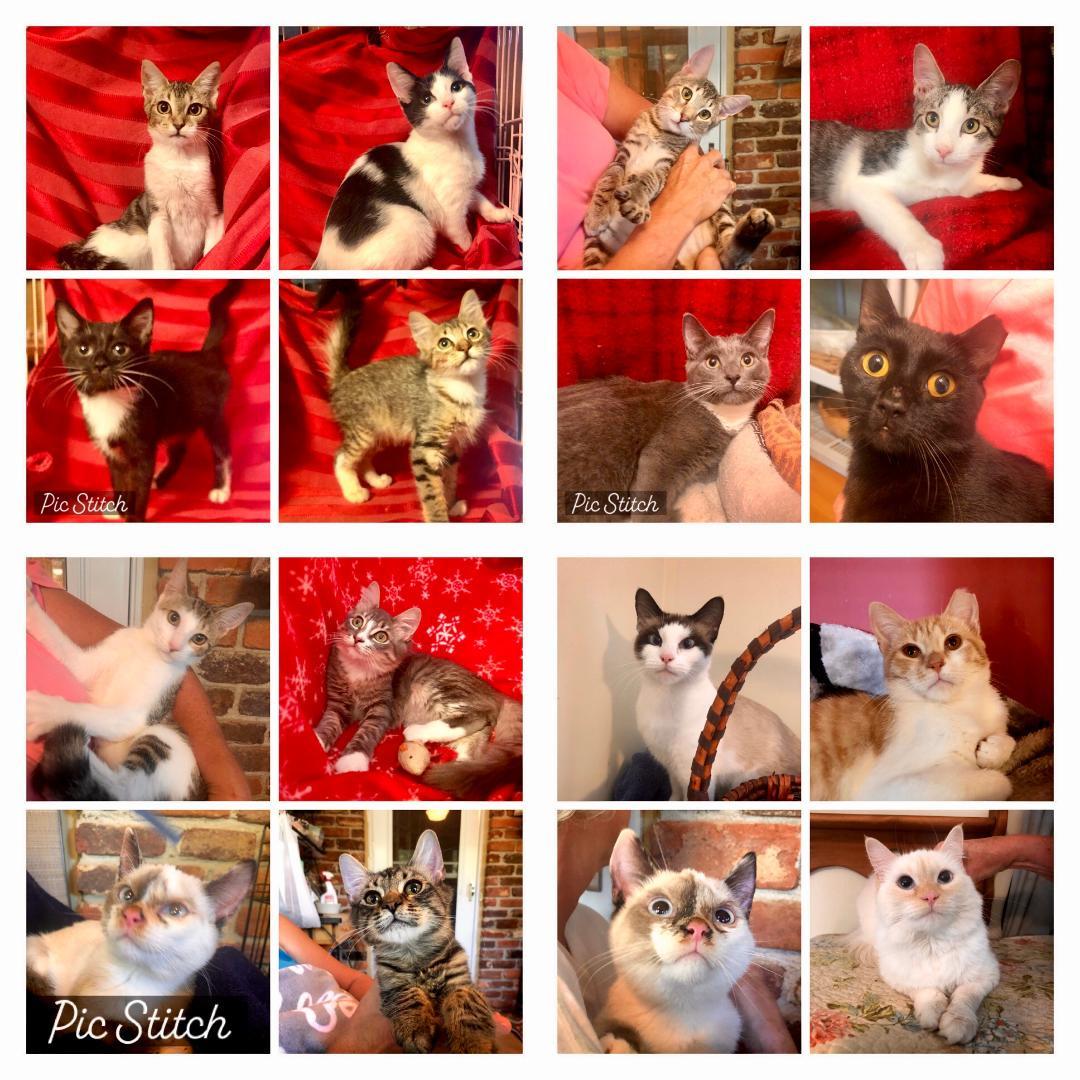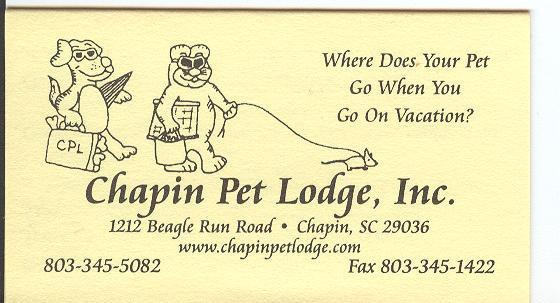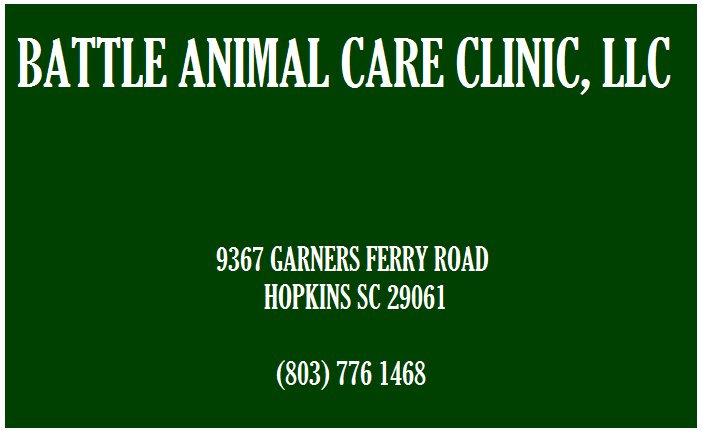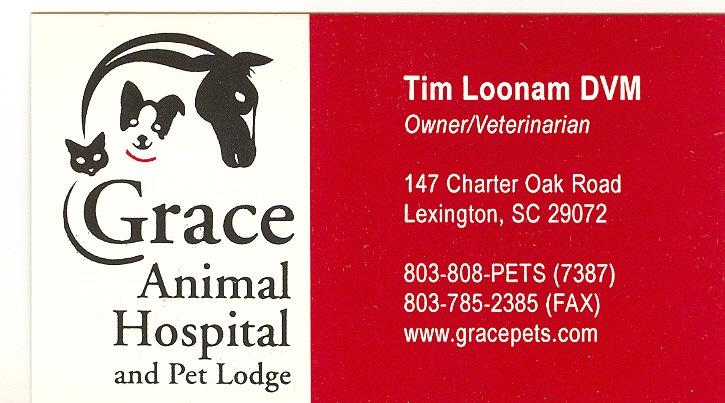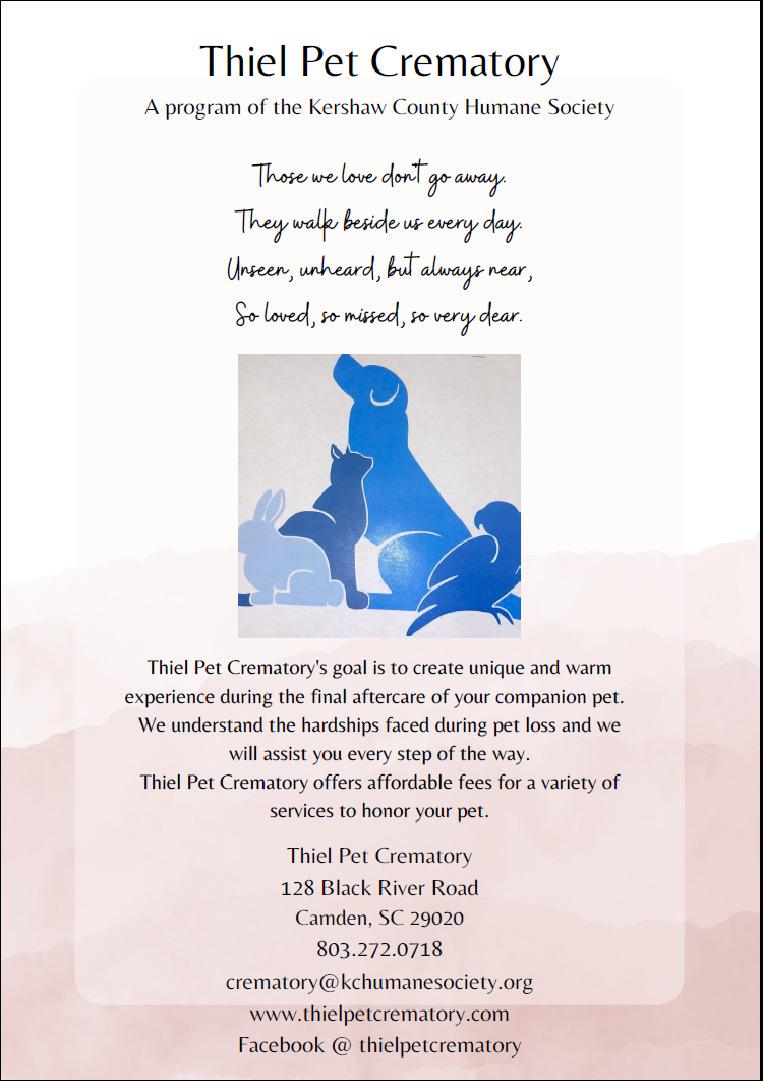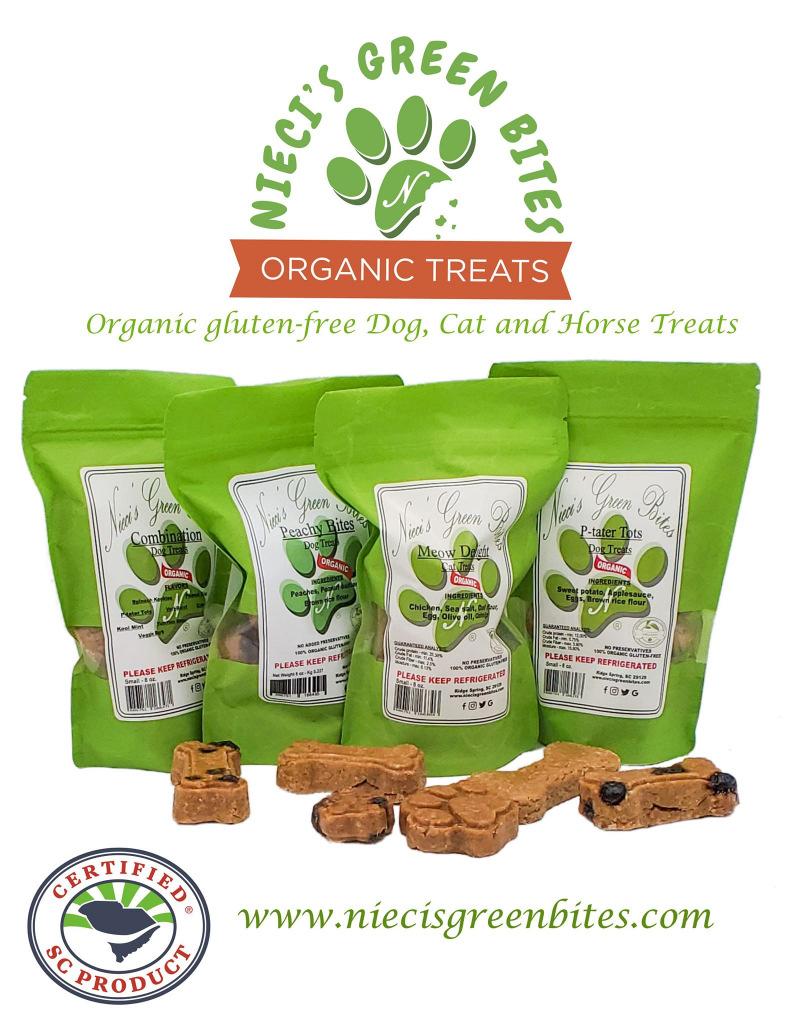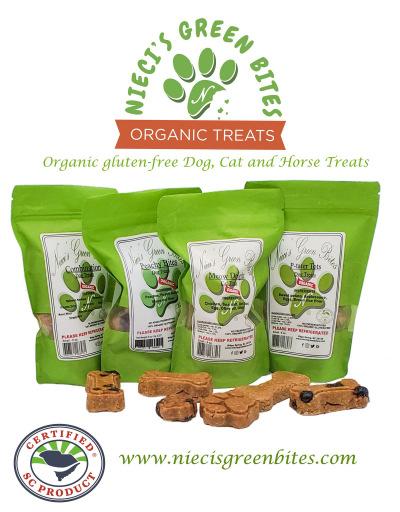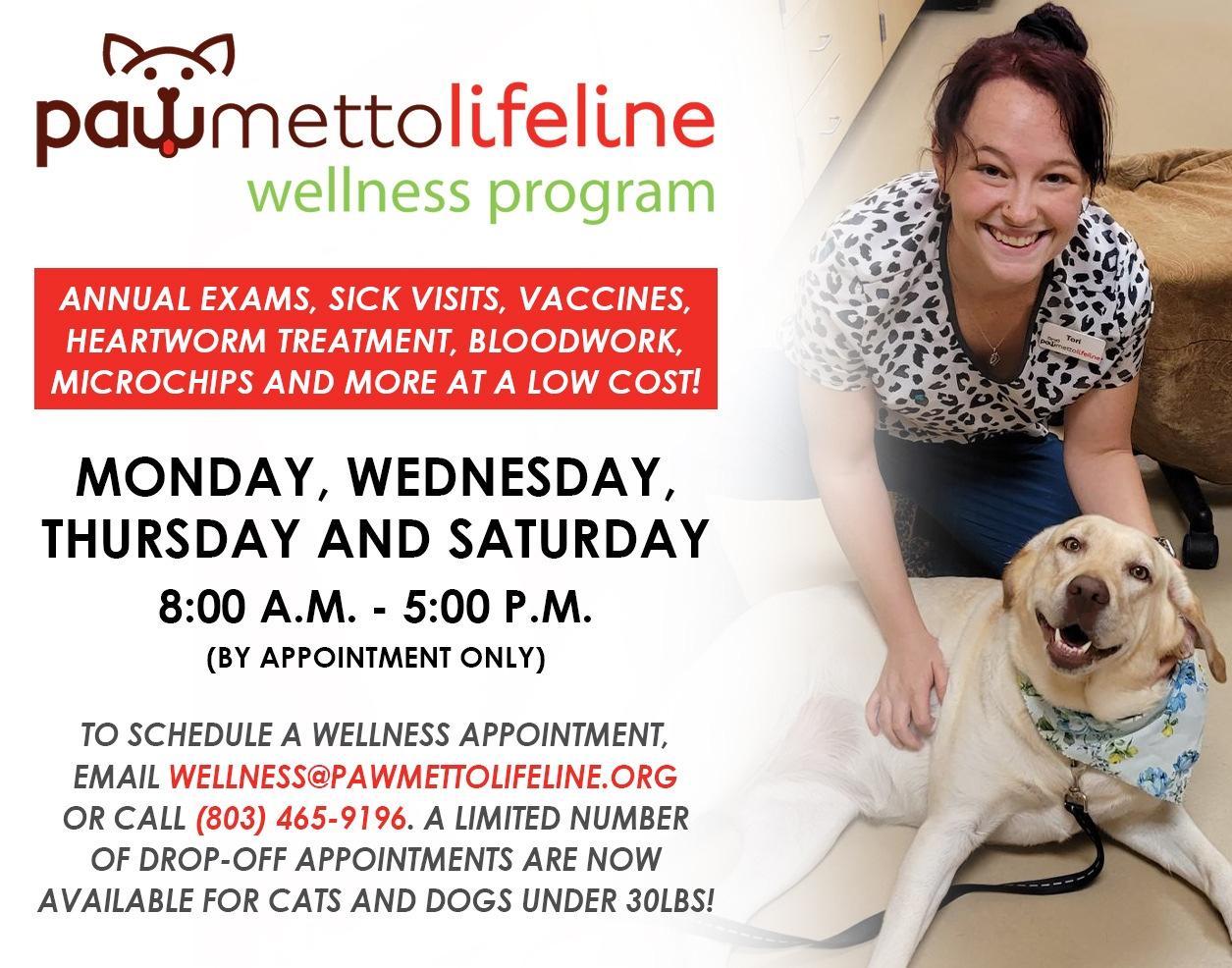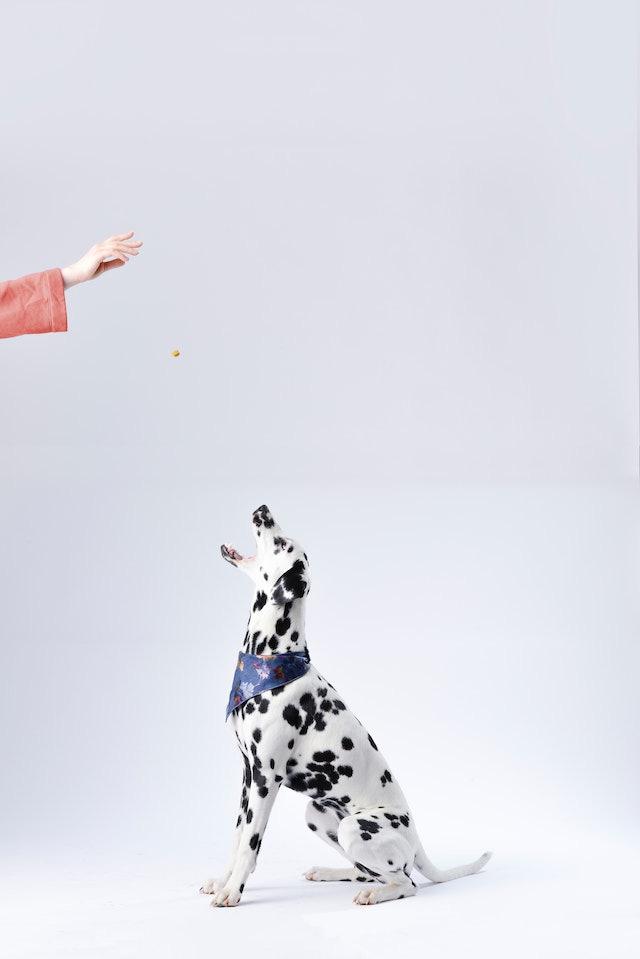
10 minute read
Pet Food Myth Busters - Part Two
By Emily Hoppmann, DVM Elgin Veterinary Hospital, Elgin, SC
In the last issue, we examined the quality of commercial pet food and what consumers should look for when feeding their pets a healthy diet. This article will cover information about corn (as a filler); raw food diets; grain-free and gluten-free diets; and wheat allergies.
Advertisement
Information about Corn
Is it a worthless filler or a nutritious ingredient?
People often hear that a plantbased ingredient such as corn is a "filler" that shouldn't be included in a pet's diet because it is poorly digested and can cause allergies. However, corn is actually an excellent source of many nutrients and is not even close to the top of the list of ingredients that dogs and cats are most allergic to. "Fillers" may be defined as feed ingredients with little or no nutritional value. Based on this description corn is certainly not a filler.
Corn provides a good source of carbohydrates, protein, and essential fatty acids in the diet of dogs and cats. Corn can be found in many forms, all of which can contribute to nutritious diets. For example, corn gluten meal contains 60 to 70% protein and is an excellent source of essential amino acids. Whole corn or corn meal provides highly digestible carbohydrates as an energy source.
Corn is a good source of linoleic acid, an essential fatty acid required by both dogs and cats. It also contains abundant amounts of antioxidants, such as vitamin E and beta-carotene. Corn gluten meal is easy to digest, making its nutrients readily available to your pet. Corn gluten meal contains many essential amino acids, so when it is properly combined with other protein sources, it can contribute to highly digestible and nutritious diets.
Corn is not a common cause of allergies. Dogs and cats can develop allergies to any protein, including meats and grains. However, allergies to food are very uncommon and it is estimated that only 10% of allergic skin conditions in dogs and cats are caused by food. Many food companies are pushing new ingredients as a way to avoid food allergies, but food allergies are just not very common and the truth is that is a pet has a food allergy to one thing, it will develop a food allergy to anything it is fed over a long period of time. Corn does not appear on the list of most common food allergies in dogs or cats.
The most common food allergies in dogs are beef, dairy products, and wheat, followed by lamb, egg, chicken, and soy. In cats, the most common food allergies are beef, dairy products, and fish. Remember that it is the overall quality of the pet food that makes it a good choice for your pet.
Dr. Emily Hoppmann completed her undergraduate studies at the University of South Carolina and graduated from the University of Georgia School of Veterinary Medicine in 2005. She works with pre-veterinaryandpharmacystudents to further their educations. She has many informativearticlesforpetowners. She is the proud owner of the Elgin Veterinary Hospital in Elgin, South Carolina, which she bought in 2011. Since high school, Emily has volunteered with Homeworks, a program like Habitat for Humanity. She enjoys fitness, reading, going to the beach, and rescuinganimals.

Raw Food Diets- are they the best for your dogs and cats?
Many pet owners think feeding their dogs and cats food that mimics the raw diet of wild animals is the right thing to do. However, it is possible for these diets to be harmful to both pets and humans alike.
Raw meat and poultry may be contaminated with harmful microorganisms, such as salmonella. Feeding raw meat to pets can expose them to bacteria, parasites, and protozoa. Members of the household will also be exposed to the same bacteria, protozoa, and parasites when you feed a diet containing raw meat to a cat or a dog. These microorganisms pose greater risk to the young, the elderly, and those with weakened immune systems.
Bones as part of a raw diet can also be hazardous to pets' health. Raw (and cooked) bones can fracture teeth. Jagged and sharp points can tear the esophagus, stomach, or intestines. Fragments of bone can also become lodged in the gastrointestinal tract.
Diets made mostly of meat and bones may be lacking in important nutrients. Calcium deficiency is a common problem with these diets, which can lead to impaired growth, spontaneous fractures, and loose teeth. Vitamin A toxicity can occur if large amounts of raw liver are fed.
A raw food diet may not be the best choice for your pet. This type of food can expose your pet and your family to harmful microorganisms, physically injure your pet, and lead to nutritional imbalances.
Should Pet Foods be Grain-free?
Many pet owners believe that grain-free pet foods are easier to digest and provide pets with better nutrition than pet foods containing grain. However, the carbohydrates, proteins, and other nutrients provided by grains add to both the nutritional value and structure of pet food.
Most cells in the body use carbohydrates as a primary source of energy. The nervous system (i.e., the brain and nerves) requires the carbohydrate glucose to support normal functions.
If carbohydrates, such as those from grains are not available, dietary protein is diverted away from its most important function, protein synthesis, in order to make glucose.
If carbohydrates are available, the dietary protein is instead used to build and maintain muscle and tissue. Reproducing females, growing puppies and kittens, and active dogs especially benefit from diets containing carbohydrates. Grains also provide fiber, which contributes to gastrointestinal health. Grains also contain essential fatty acids and other nutrients that contribute to a healthy skin and coat. Properly processed grains provide needed nutrients as part of a nutritionally complete and balanced diet.
Wheat Allergies
How common are they?
There is a widespread misperception that wheat commonly causes food allergies and pet foods containing it should be avoided. Food allergies are actually uncommon in dogs and cats. Food allergies constitute only a small percentage of allergy problems in pets. While the exact incidence is unknown, it is estimated that only
10% of allergic skin conditions are caused by food. Flea bites and environmental allergens, such as pollens, mold, and dust mites, are more common triggers of allergic symptoms than food.
An allergy is an abnormal reaction by the body's immune system to normal substances in the environment, including foods. Allergies can form to almost any food or ingredient, but the more animals are exposed to a food or ingredient, such as wheat, the more likely it is that allergies will develop. Proteins, especially beef and dairy products, are the most common food allergens in dogs and cats. Genetics is also a factor in the development of allergies. Certain individuals are predisposed to become allergic to something, but no single food is more likely to cause allergies than another. The only way to truly diagnose a food allergy is with an elimination diet trial, which your veterinarian can prescribe. Unless it has been proven to be the culprit through appropriate testing, arbitrarily avoiding a single ingredient, such as wheat won't prevent allergies from developing.
PetFoodcontinuedonpage17
JOIN OUR TEAM!
We are hiring all positions!
Dr. Emily Hoppmann, the owner and solo practitioner of Elgin Veterinary Hospital, a small and exotic animal practice in Elgin SC, is looking for another VETERINARIAN and staff members to join the EVH Family who loves the freedom to practice high-quality medicine in a non-corporate, family-based environment! Welcoming any and all veterinarians, from relief veterinarians looking for another clinic to add to their calendar, to veterinarians with aspirations of owning their own veterinary hospital.
Please submit your information to alwaysdonoharm@gmail.com and check out more about our hospital at www.elginvethospital.com

Spay/Neuter continued from page 7 a few times a year, they tend to have a bigger litter size than cats. Dogs, unlike cats who reabsorb their uterine lining, actually menstruate similar to humans and include all the unpleasant side effects such as painful cramping and nausea. Therefore, spaying your dog is the only route to go to keep your house clean; keep your dog out of pain; and keep yourself free of the burden of finding homes formultiplepuppies.
Another great reason to spay and neuter is to help prolong the pet's life. A recent University of Georgia study in the Departmentof Genetics, (dogshttps://journals.plos. org/plosone/article?id=10.1371/ journal.pone.0061082) compared causes of death amongover40,000sterilized and reproductively intact domestic dogs. It concluded that thelifespanwasgreater in the sterilized dogs compared to those with their reproductiveorgans.
Banfield’s 2013 report concluded neutered male dogs live an average of 18% longer and spayed females dogs live 23% longer than their fertile counterparts. Sadly, intact males are twice as likely to be hit by a car thanthoseneutered.
Spaying and neutering dogs also helps to prevent or eliminate certain cancers and diseases of thereproductiveorgans.
It is recommended that female dogs should be spayed before they are 5 months old. In addition, small, medium and large breedmale dogsshould be neutered before they are 5 months old. Studies have also shown that giant breed male dogs who are house pets should be neutered after growth stops, between 12 to 15 months of age, due to orthopedicconcerns.
Help Spread the Word
Currently, Rhode Island is the only state to have mandatory spay and neuter laws in their General Laws. South Carolina state laws only demand spaying and neutering if the dog or cat is being acquired from the shelter,agency,society,or rescue organization.
Therefore, it is up to us to do our part in preventing more unwanted animals being dumped in shelters or given to people who will abuse or neglect them. If you find or privately adopt an animal that has not been spayed or neutered, itisupto youto doit.Even older cats and dogs who arehealthycanbespayed or neutered (My friend had her 7-year-old dog successfully neutered). If your neighbors or friends bring home a new animal, it is up to you to encourage them.
Contact your veterinarian to discuss and/or schedule your pet’s appointment and encourage your family and friends to do the same. If money is the deterrent, there are many low-cost spay/neuter clinics across the state to help cut costs so it is affordable to everyone.
A great way to pass on this message to friends and strangers alike is to purchase the “No More Homeless Pets” license plate available through the SC Department of Motor Vehicles. A portion of the fees collected for the plate goesintoaspecialDepartment of Agriculture account to support annual spaying and neutering programs. I am anxiously awaiting my plate toarriveinthemail.
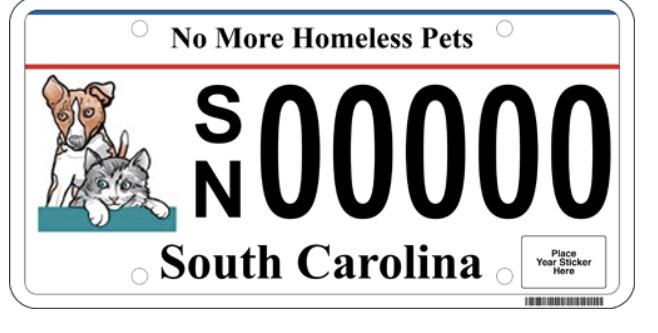
We want to help connect pet owners want help pet with products that are high quality, products that are beneficial and unique. In each issue, we beneficial and unique. In each issue, we unique. each issue, unique. each issue, will choose pr will choose pr will choose pr will choose products that will oducts that will oducts that oducts that will simultaneously satisfy you and yourpet!! simultaneously satisfy you and yourpet!! you you
Uah Pet Retractable Cat Wand Toy with 4 Piece
Teasers
by Uahpet
uahpet.com
Great way to get your cats energy out and do more exercise! 60 inches of all-around hunting space, making it more natural and flexible and lessening the impact of human control. Recreate the most realistic cat hunting situation. Allows your furry child to move more freely, even flipping, jumping, fluttering, and chasing. Four different cat wand toys refills designed for the four different senses of cats. From the four senses of vision, hearing, smell and touch pique cat's interest and stimulate their "hunting instinct."
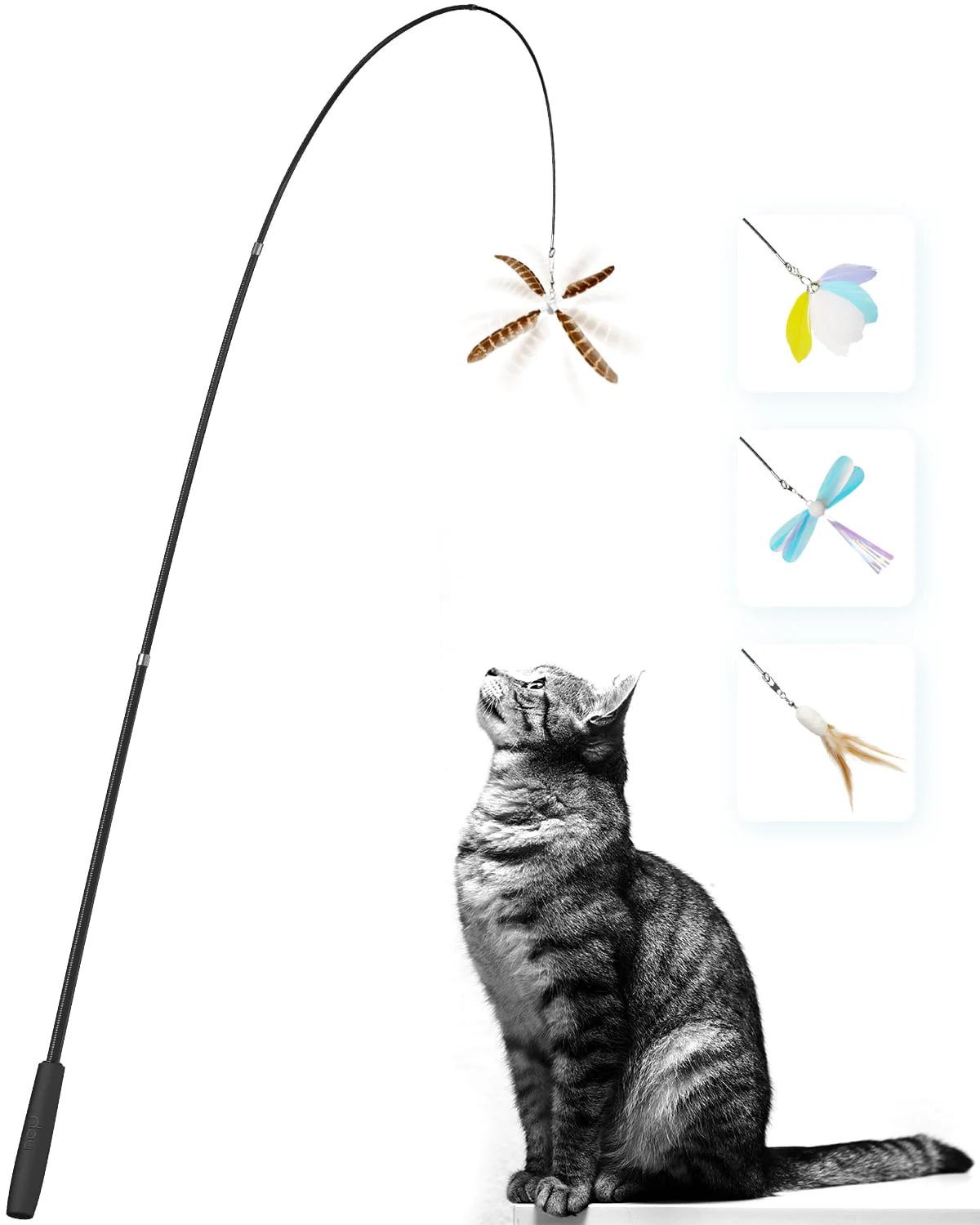
Soggy Doggy Super Shammy
by Soggy Doggy Productions LLC
soggydoggydoormat.com
Does your dog love to play outdoors getting wet, messy and muddy? No problem! This long-lasting plush dog towel (size: 31 x 14″ and 1.5″ thick).
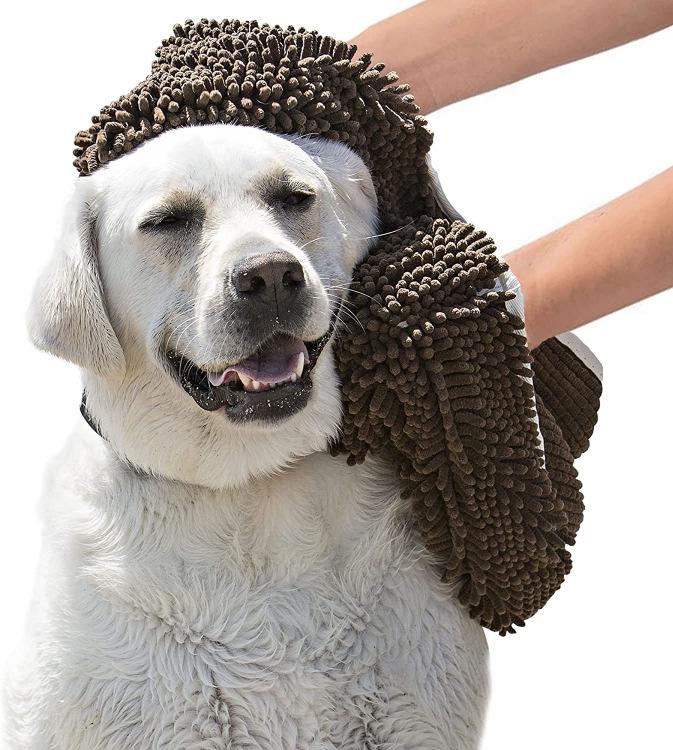
Super absorbent material made from microfiber chenille 80% polyester/20% polyamide.
Quick drying & odor free - no doggy smell!
Convenient hand pockets making cleaning easier and faster Works well for dog of all sizes!
Uah Pet 2-in-1 Treat Dispensing Dog Puzzle Toy
by Uahpet
uahpet.com
This dog puzzle toy combines a 16-hole dog food puzzle chassis with a chewable food dispenser to satisfy dog’s sniffing and chewing needs. The two can be played separately or combined to adjust the difficulty. There are four game modes for dogs to challenge. Non-toxic materials, BPA-free, safe and environmentally friendly, and will not harm your dog when biting or licking.
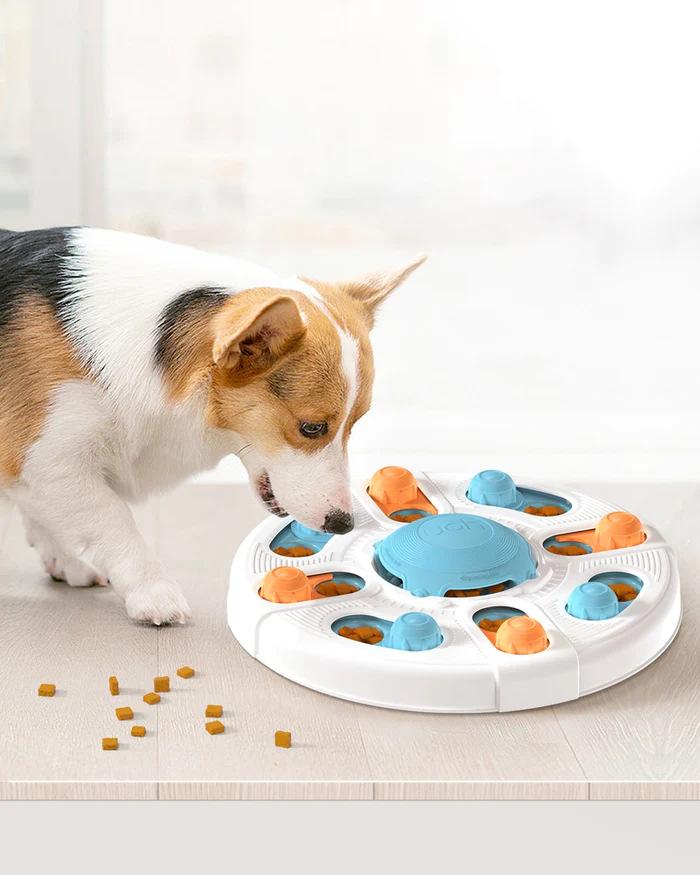
IGHTS, IGHTS,
You guessed it... this year is going to be movie themed! We will play games, meet community members who help animals and learn how we all can be great advocates for animals. Fur Friends Summer Camp is for children ages 7 to 12.

Available Sessions: Available Sessions: Available Sessions: Available Sessions: June 13 June 13 13--16, June 20 16, June 16, 20--23, 23, July 11 July 11 11 11--14, July 18 14, July 18 14, July 18 14, July 18--21 2121 21 8:30 a.m. 8:30 a.m. a.m. a.m.-- 12:30 p.m 12:30 p.m 12:30 p.m 12:30 p.m. If you would like to donate a scholarship for a child, or if you have any questions please contact Helen Cotton, Special Projects Manager, at hcotton@pawmettolifeline.org or 803-465-9173.

Wheat is an excellent source of complex carbohydrates for energy, as well as a source of protein. Including wheat in a pet food as an energy source preserves the animal proteins in the diet for maintaining a pet's muscle and tissue.
Are Gluten Free Diets Really Healthier for Your Pets?
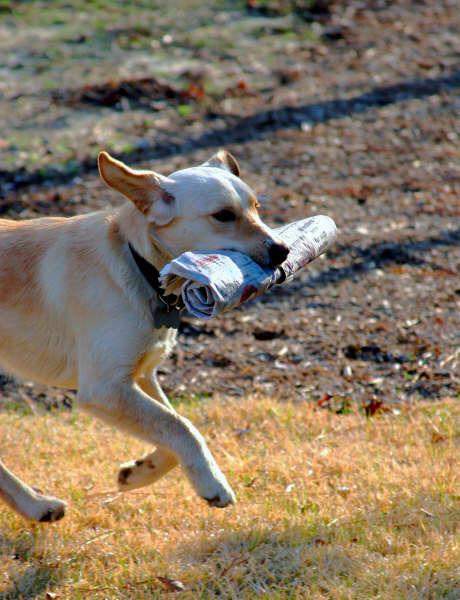
Although only 1% to 2% of people have celiac disease and require a gluten-free diet, many more people are jumping on the gluten-free bandwagon in hopes it will help them lose weight or feel better. Many of them assume that a gluten-free diet is what is best for their pets too. However, gluteninduced enterotherapy (celiac disease) is very rare in dogs and has been reported primarily in Irish Setters. Pets with celiac disease react to the proteins (gluten)in wheat, rye, and barley. The protein in corn gluten does not cause GI problems, even in individuals with celiac disease.
Gluten is the concentrated protein from grain after all the starch has been removed. Corn gluten meal contains approximately 60% to 70% protein, and provides essential amino acids that form the building blocks for protein. Gluten is highly digestible. In addition, gluten provides structure to pet food. Just as wheat gluten is added to breads to enhance the texture, a small amount in pet food helps canned formulas, kibbles, and treats hold their shape. Gluten from various grains is a nutritious ingredient that provides a concentrated source of protein in pet foods.
Cats are Good For The Soul
Animal Rescue
Cats are Good For The Soul Animal Rescue
Cats are Good The Rescue Cats are Good The Rescue www.catsaregoodforthesoul.com
We are a small animal rescue organization located in the Columbia area of South Carolina. We started out with two friends who met in a field trapping homeless cats. We have branched out to a small group of cat lovers. We work together to foster, trap, neuter and adopt out cats to good forever homes. We all agree that cats are good for the soul!
Contact us by emailing catsaregoodforthesoul@yahoo.com or follow us on Facebook!
